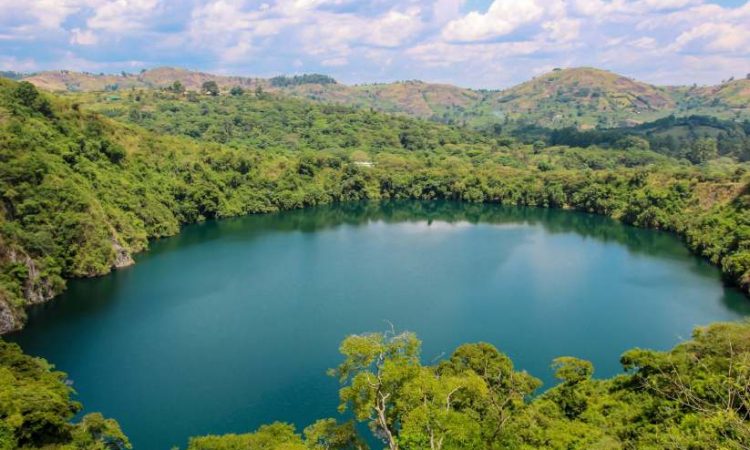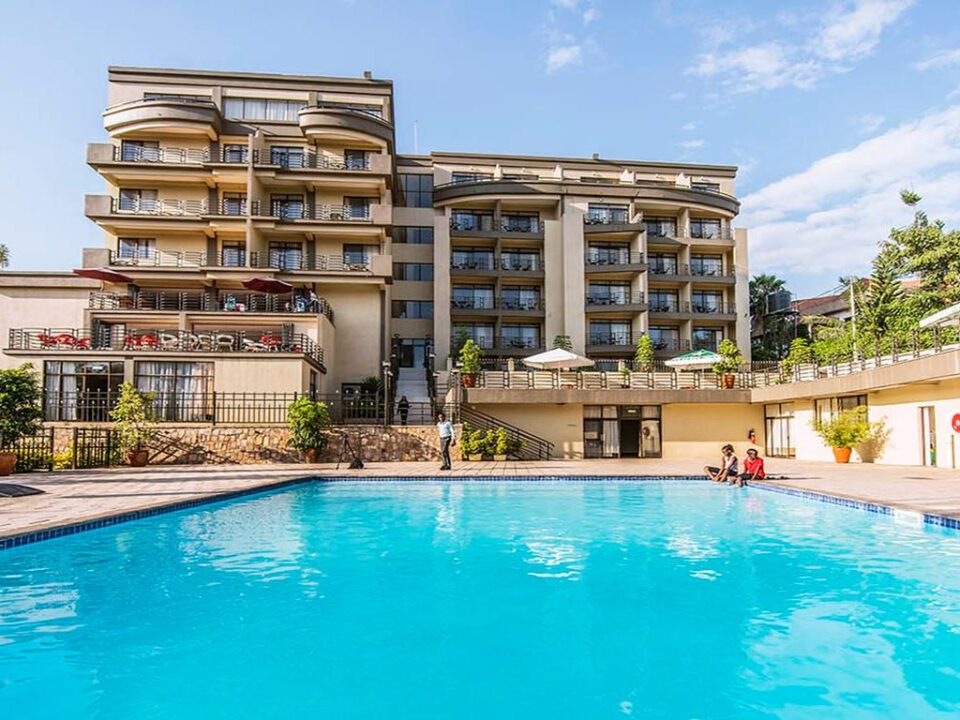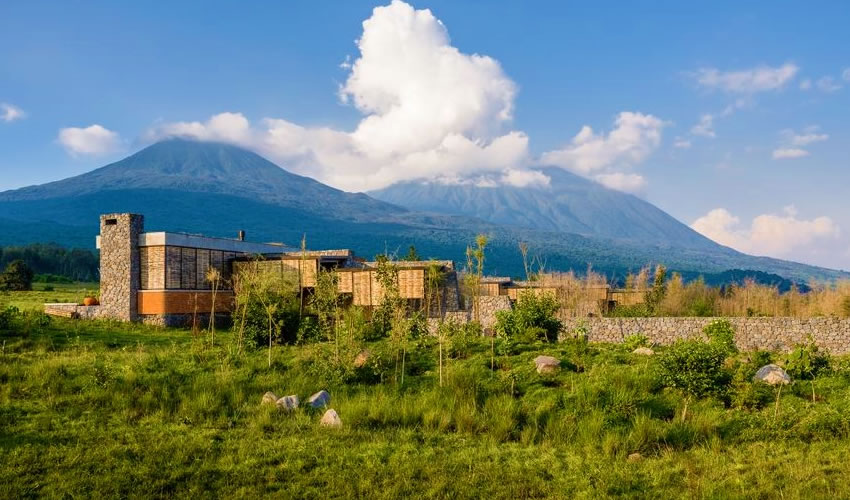- GET IN TOUCH WITH US:
- +256 753518160
- +256 777842166
- info@experiyatourcompany.com

Can I visit Pian Upe Game Reserve?
November 10, 2025
What’s the best itinerary for 7 days in Uganda?
November 10, 2025How to See Uganda’s Crater Lakes?
Uganda’s natural beauty stretches far beyond its famed savannas and rainforests. Among its most breathtaking features are the crater lakes — serene, jewel-like bodies of water scattered across the western highlands. Formed thousands of years ago by volcanic activity, these lakes now shimmer quietly in the shadows of mountains, surrounded by lush forests, tea plantations, and rural villages. They are among the most photogenic landscapes in East Africa and offer visitors a chance to experience Uganda’s tranquil side while still remaining close to wildlife and adventure destinations.
For travelers who want to explore the country beyond its gorillas and big game, visiting Uganda’s crater lakes is an absolute must. But how can you see them, and where should you go? Let’s take a detailed journey through these stunning volcanic wonders and discover how best to explore them.
Understanding Uganda’s Crater Lakes
Crater lakes are formed when volcanic eruptions create depressions or calderas that later fill with water, either from rainfall or underground springs. Uganda’s western region, lying within the Albertine Rift Valley, is dotted with hundreds of these ancient craters, many of which are still surrounded by dormant volcanic hills. Over time, nature has softened their rugged edges, cloaking them in green and turning them into some of the most peaceful and scenic spots in the country.
These lakes are concentrated mainly in three areas: around Fort Portal, in the Ndali–Kasenda Crater Field, and near Queen Elizabeth National Park, where the explosion craters form dramatic landscapes within the park’s savanna. Each area offers something unique — from quiet hiking trails and canoe rides to panoramic viewpoints and luxurious lodges perched high above the water.
The Ndali–Kasenda Crater Lakes – Uganda’s Lake District
The Ndali–Kasenda Crater Field, located near Fort Portal in western Uganda, is often referred to as Uganda’s “Lake District” because of its high concentration of crater lakes — more than 60 of them, each with a unique shape, size, and character. This area lies between Kibale Forest National Park and the foothills of the Rwenzori Mountains, making it a perfect stopover for travelers heading to or from chimpanzee trekking adventures.
The landscape here is a rolling green paradise, with steep hills, fertile farms, and deep blue lakes filling the craters. Some of the most popular and accessible lakes include Lake Nkuruba, Lake Nyinambuga, Lake Nyinambuga, Lake Nyabikere, and Lake Kifuruka. Many of these are linked by scenic walking trails that pass through villages and forests, offering opportunities to interact with local communities along the way.
One of the most beautiful views in the region is from Ndali Lodge, which overlooks twin crater lakes, Nyinambuga and Kifuruka, framed by lush hills. The calm waters reflect the surrounding greenery like glass, especially at sunrise and sunset, when mist curls over the surface.
Activities around the Ndali–Kasenda Lakes include hiking, birdwatching, swimming (in select safe lakes), canoeing, and photography. Visitors can also take guided walks to learn about the local culture and agriculture — coffee, vanilla, and banana plantations line many of the lake shores.
Lake Nyinambuga – The Lake on the 20,000 Shilling Note
Among Uganda’s crater lakes, Lake Nyinambuga stands out for its beauty and fame. It is the lake depicted on the back of the 20,000 Ugandan shilling note. Nestled among rolling hills and dense vegetation, its waters glow deep blue under the sunlight, surrounded by rich greenery.
Visiting Lake Nyinambuga offers a mix of relaxation and exploration. You can walk along its rim, watch fishermen gliding silently in canoes, or hike up to nearby viewpoints for sweeping panoramas. Several eco-lodges and community-run guesthouses around the area provide comfortable accommodation with spectacular views of the lake.
The lake’s peaceful setting makes it a wonderful retreat after a chimpanzee trek in nearby Kibale Forest, which lies only about a 45-minute drive away.
Kibale and the Crater Lakes Connection
Kibale Forest National Park is famous for its chimpanzee trekking and diverse primate population, but many travelers overlook its stunning crater lakes nearby. After a morning tracking chimpanzees, you can spend the afternoon exploring the Ndali–Kasenda lakes.
The contrast between the dense rainforest and the open lake landscapes is striking. Bird lovers will find the region particularly rewarding, as the crater lakes attract species such as great blue turacos, malachite kingfishers, black-and-white casqued hornbills, and African fish eagles. The surrounding farms and forests also host monkeys, butterflies, and rare tree species.
For a full experience, some travelers opt to stay at lodges that offer easy access to both the park and the crater lakes, allowing for a balanced mix of adventure and relaxation.
The Crater Lakes of Queen Elizabeth National Park
Further south, within and around Queen Elizabeth National Park, another cluster of crater lakes offers a completely different atmosphere. Unlike the forested lakes near Fort Portal, these are dramatic explosion craters carved into the park’s savanna and escarpments. They were formed by violent volcanic explosions thousands of years ago and now create some of Uganda’s most photogenic landscapes.
The Katwe Explosion Craters are among the most famous in this area. The Katwe Crater Drive, a 27-kilometer loop within the park, takes visitors past several craters, each with a distinct look — some filled with water, others dry and covered in grass. The views from the Kabatoro Gate to the Queen’s Pavilion are breathtaking, stretching over the plains to Lake Edward and the Rwenzori Mountains beyond.
The Katwe Salt Lake, located just outside the park, is a fascinating stop where visitors can learn about traditional salt mining practices that have been carried out for centuries. The lake’s surface shimmers in the sunlight, and the salt pans create striking geometric patterns, perfect for photography.
Other notable crater lakes in the Queen Elizabeth region include Lake Munyanyange, known for its flamingos and pelicans, and Lake Nyamunuka, which attracts wildlife during the dry season. These lakes combine natural beauty with cultural and ecological significance, making them an integral part of any safari in western Uganda.
Lake Bunyonyi – The Most Famous Crater Lake of All
While technically not a single volcanic crater but rather a series of flooded valleys, Lake Bunyonyi in southwestern Uganda is often considered part of the crater lake chain due to its volcanic origins and highland location. Situated near Kabale, it is one of the most beautiful and tranquil lakes in Africa.
Lake Bunyonyi — meaning “place of many little birds” — is renowned for its calm waters, terraced hillsides, and 29 small islands scattered across its surface. It’s a perfect place for swimming, canoeing, and relaxation after an intense safari or gorilla trekking in Bwindi Impenetrable National Park.
Photographers will love the ever-changing colors of the lake, from deep blue in the morning to silver and gold at sunset. Visitors can take boat trips to the islands, each with its own story — such as Punishment Island, where unmarried pregnant girls were once abandoned, or Bwama Island, which once hosted a leper colony and now has a school and lodge.
Lake Bunyonyi also offers an intimate look at Ugandan rural life, with traditional dugout canoes gliding through the mist and farmers tending to terraced fields on the hillsides.
How to Explore Uganda’s Crater Lakes
Exploring Uganda’s crater lakes is best done as part of a broader western Uganda circuit that includes national parks and cultural sites. Here’s how to make the most of your journey:
By Road: The crater lakes are most easily accessed by road from Kampala, Fort Portal, or Mbarara. The drive from Kampala to Fort Portal takes about five hours on a smooth tarmac road, while the journey from Fort Portal to the Ndali–Kasenda lakes is only 30 minutes. Roads leading to specific lakes are often gravel or dirt, so a 4×4 vehicle is recommended.
Guided Tours: Hiring a local guide enhances the experience. They not only help with navigation but also share stories about the lakes’ geological origins, local legends, and wildlife. Guides from nearby community tourism associations often lead nature walks or canoe trips.
By Hiking and Walking: Many crater lakes are connected by scenic trails. Hiking allows you to appreciate the changing landscapes and interact with local villagers. The most popular routes include walking between Lake Nyabikere and Lake Nkuruba or climbing to viewpoints overlooking the entire crater field.
Canoeing and Boating: Canoeing on the crater lakes offers a peaceful way to explore. On lakes like Nkuruba and Bunyonyi, wooden dugout canoes can be rented from local operators. Floating across the calm waters surrounded by forested hills is an experience of pure serenity.
Photography and Birding: Bring a camera and binoculars — the reflections, sunsets, and abundant birdlife make the crater lakes an absolute dream for photographers and birders alike.
When to Visit the Crater Lakes
The best time to visit Uganda’s crater lakes is during the dry seasons, from December to February and June to August, when the weather is pleasant, the trails are dry, and the skies are clear for photography. However, even during the rainy months, the lakes remain stunning, and the surrounding vegetation becomes lush and vibrant.
Why You Should Visit Uganda’s Crater Lakes
Uganda’s crater lakes offer a rare combination of natural beauty, tranquility, and cultural authenticity. Unlike busier safari parks, these lakes provide a slower, more reflective travel experience — a chance to immerse yourself in landscapes that feel untouched by time. Whether you’re hiking through the Ndali hills, watching flamingos on Lake Munyanyange, or paddling on Lake Bunyonyi at dawn, the feeling is always the same: peaceful, grounding, and deeply inspiring.
For those who love photography, adventure, or simply the quiet beauty of nature, the crater lakes are among Uganda’s greatest treasures.
Book Your Crater Lakes Adventure with Experiya Tour Company
If you’re dreaming of exploring Uganda’s breathtaking crater lakes, let Experiya Tour Company plan the perfect trip for you. With deep local expertise and a passion for showcasing Uganda’s hidden gems, Experiya designs personalized itineraries that include the most scenic lakes, guided walks, cultural encounters, and relaxing lodges.
Their professional guides ensure you don’t miss a thing — from the best viewpoints in the Ndali–Kasenda Crater Field to the shimmering Katwe salt pans and the peaceful waters of Lake Bunyonyi. Experiya takes care of every detail, combining comfort, culture, and adventure into one unforgettable journey.
Travel with Experiya Tour Company and experience Uganda’s crater lakes the way they were meant to be seen — through the eyes of those who know and love them best.




